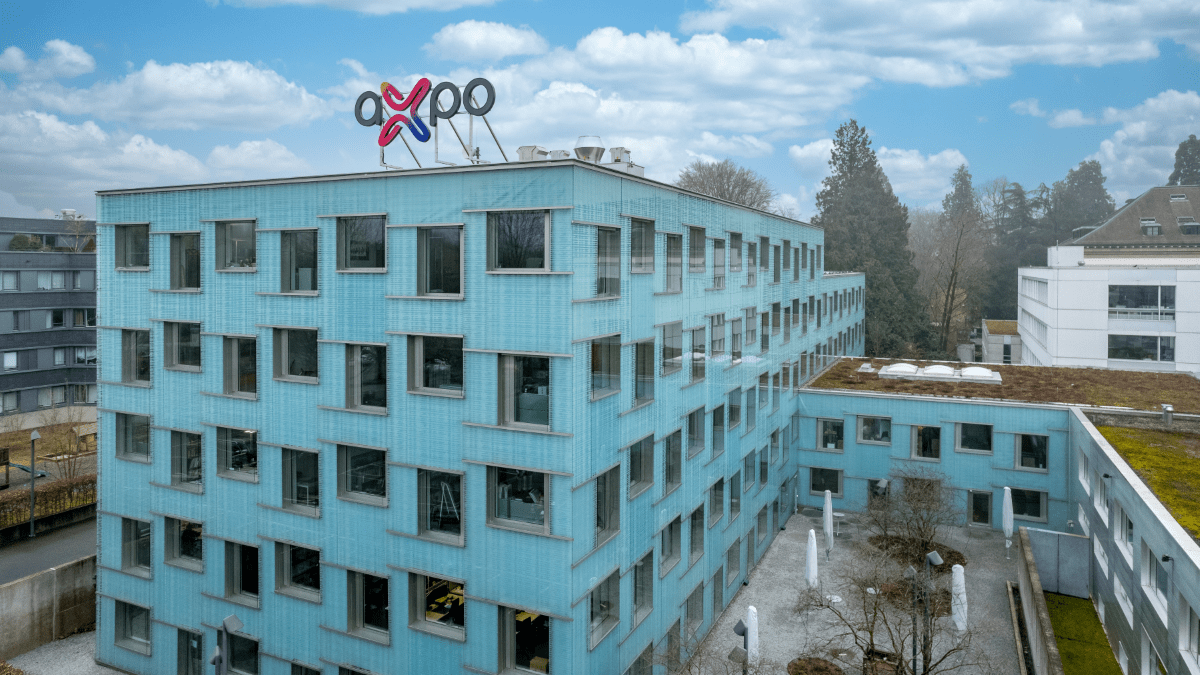16.12.2022 | Tour de Suisse of Hydropower, part 4
For more security of supply: Hydropower goes digital
Kraftwerke Sarganserland power plants are the digital flagship in the Axpo hydropower plant portfolio. It is here that Axpo is conducting successful trials into combining long-term power plant infrastructure with the latest digital technology and thus strengthens the security of supply. Axpo is also readying a range of digital services for the market. The Group-wide roll-out is underway.
High above the golf course of the Grand Resort Bad Ragaz, a winding road leads into the Tamina Valley. This tributary valley of the Chur Rhine Valley is so rugged and angular that even the post van only edges round the bends slowly with a blast of its three-tone horn. Behind the zigzag bends lie the villages of Pfäfers and Valens on opposing valley flanks, divided by a deep gorge since time immemorial. It wasn’t until five years ago that a direct link between the two was established for the first time with the Tamina bridge. The arch bridge is a magnet for architecture fans. With an arch span of 260 metres, it is the biggest in Switzerland.
The elongated Tamina Valley, the Calfeisen Valley branching off it, and the Weisstannen Valley that feeds water into the plants are home to the Sarganserland power plants and the Mapragg and Gigerwald reservoirs. Back when an Axpo project team was looking for a reliable partner for digital field trials three years ago, innovative minds from this high-pressure hydropower plant with a pumped storage plant stepped in. “Kraftwerke Sarganserland was a stroke of luck,” says Emil Bieri, Head of Digital Transformation at Axpo Hydro. “The enthusiastic leadership crew supported our digitalisation projects from day one. The geographical location between the Axpo headquarters in Baden and the headquarters of our first Hydro 4.0 partner in Bavaria was also important for us.”
The glass hydropower plant
Emil leads us past the foot of the Mapragg reservoir through a classic power plant building. Then it’s down several floors into a hall the size of two churches. Computer monitors line up next to one another along the walls where switch boxes once awaited manual maintenance. It quickly becomes clear that even today, a single Francis turbine is more likely to impress than a dozen computer screens. “But the inner workings of these computers, the data recorded and, above all else, the analysis of this data make the work considerably easier and turn everything that came before on its head,” says Emil, not without pride.
Data management plays an important role in both production and trade. Extensive details of hydropower plants are already available at the click of a mouse at the Axpo headquarters in Baden. Most power plants are controlled from there. But these new digital tools bring a valuable added benefit that’s more than just analytical. “The ability to access the most important, operationally relevant data from anywhere offers us enormous flexibility,” explains operations manager Matthias Kohler. “For instance, we have a round-the-clock overview of the status of water catchments.”
The web app will soon be expanded with additional features. This will merge real-time data, trend analyses, maintenance intervals based on historical data, and automated monitoring including an alert system.
Wide range of digital services for hydropower plants
As a centre of excellence, Emil Bieri and his team offer a variety of services for the digital transformation of hydropower plants. The “Digital Compass” comprises a situational analysis with a focus on operations and maintenance, whereby the hydro digitisers quantify the potential benefits of possible digital measures. Once the location has been determined, the service will focus on the pillars of data management and analysis (“Analytics”), operational maintenance processes, administrative processes and an ultra-modern working environment (“Workforce”), as well as equipping power plants with crisis-proof communications infrastructure and employees with mobile devices (“Infrastructure”). The next step will see “Robotics” integrated as an additional focus within the digitalisation process. “There is a market for closely overseeing such transformation processes, not just within the Group, but in countless other power plants across Switzerland too,” says Emil. However, switching just Axpo’s power plant portfolio to digital will be a mammoth task.
Plant sections identifiable by QR code
We accompany a fitter on an inspection tour. His only tool? A tablet. All 24 of the staff at Kraftwerke Sarganserland were equipped with mobile working devices. The fitter reads the QR code of a plant section using the camera function. A comprehensive maintenance history for the section then appears on screen immediately. “You’d struggle to find more information elsewhere anywhere near as quickly”, says Emil. Another, much younger employee joins the group: “The way I see it, digitalisation obviously isn’t moving fast enough.” Having grown up with a smartphone and a computer, his heart sinks every time he sees a manual. For him, accepting his assignments with a glance at his tablet and ticking them off there when done is the most natural thing in the world. Operations manager Matthias Kohler: “Kraftwerke Sarganserland’s plants have 1 912 QR codes in use. These QR codes have been used to record orders at least once on more than 1 000 objects to date.”
Mobile roaming in the middle of the dam
For reasons of security and convenience, Axpo doesn’t use standard Wi-Fi in its digitalisation strategy, opting instead for mobile radio technology. “We are well aware of the issue posed by the fact that hydropower plants are critical infrastructure,” says Emil. To ensure full coverage with mobile wireless, Axpo subsidiary WZ-Systems installed 125 antennas, 2.3 kilometres of steel cabling and countless signal amplifiers in Sarganserland power plants. Of course, the patrols inside the several metre-thick dam walls are mobile communications-enabled too. “Axpo is investing roughly 25 million Swiss francs in communications coverage in the power plant interiors across all 31 plants,” reveals Emil. “That’s not to mention the roughly two million for outside coverage.” However, these costs also include backup communications media such as operational radio. The specific cost varies from one plant to another based on local conditions.
To illustrate this, we take a car trip up the valley to the Gigerwald reservoir. In the middle of the dam crest, the operations manager stops his car and gets out. A traffic sign post is askew. Matthias pulls out his mobile phone and scans the QR code of the dam section. The maintenance order is generated in under a minute. The mobile has full coverage. “If the repair of the post had already been scanned in by a colleague, I would have seen it online immediately,” explains Matthias. “Because QR code scanning is so quick and straightforward, carrying out a brief online check even for the most minor issue has become standard procedure for us.”
From the dam, we look out at the Gigerwald reservoir. What lies beneath the glittering surface is nothing less than the most important Swiss energy source for electricity and thus one of Switzerland’s most valuable assets at the moment. Due to the impending electricity shortage in the winter months, the renovation works that started in late summer 2022 were suspended and postponed for two years. A pragmatic solution, even if these renovations are crucial to long-term operations. But the availability of up to 160 gigawatt hours (GWh) of hydropower is the top priority at the moment. “Energy-saving and infrastructure-friendly processes are indispensable, particularly given impending power shortages,” says Emil. “Here, digitalisation throws the door to better efficiency and data-based planning wide open.”
Roll-out to the 31 Axpo power plants underway
Emil Bieri and his team will gradually roll out what started as a flagship project at Kraftwerke Sarganserland to all Axpo hydropower plants. For instance, the Rüchlig run-of-river power plant in Aarau is currently undergoing transformation. Constructed in 1884, it was completely rebuilt by Axpo in 2014. Now it is a candidate for digitalisation. “This will be followed by the Tschar/Tavanasa and Reichenau power plants in the canton of Grisons and, soon, the plants in Windisch and Wildegg/Brugg on the Swiss Plateau,” Emil tells us. The objective: to complete the digitalisation of 31 Axpo plants by 2026. “Plans for the digitalisation schedule for all Axpo plants have been drawn up, coordinated and budgeted for.”
But not enough plants have been switched yet to be able to measure efficiency increases or the value of optimised maintenance planning. Added to this is the fact that new mobile maintenance components and modules are arriving all the time. Plans are already underway to develop a system of indicators for measuring and tracking the benefit of the services following completion of the digitalisation process. The plants will receive an online dashboard for this. Emil Bieri: “We will start to see meaningful figures over the next few years once the new way of working has become reality at all plants.”




